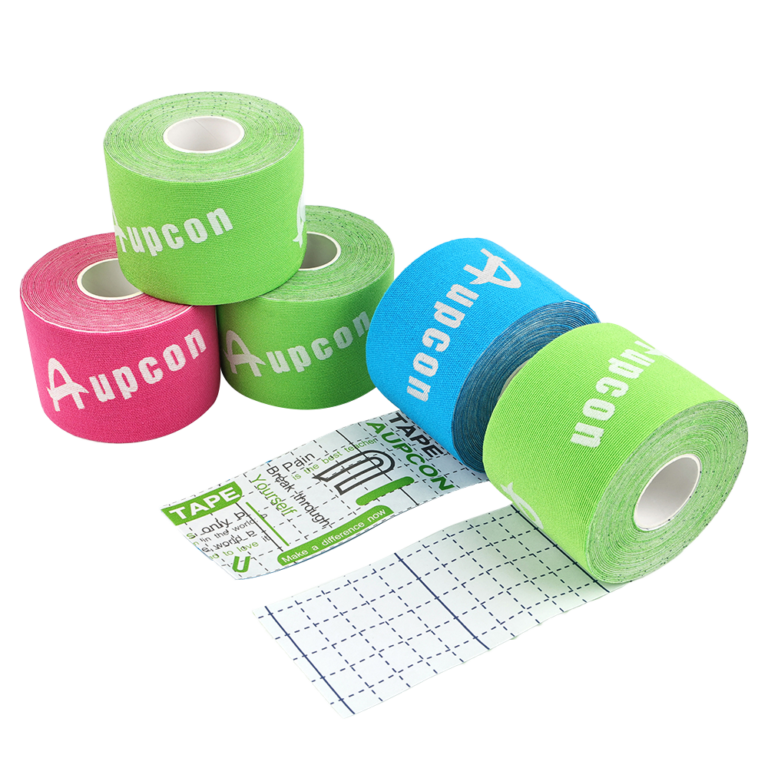Durante la práctica deportiva, los deportistas profesionales o las personas amantes del deporte utilizan cinta de kinesiología para la rodilla para prevenir, apoyar o curar problemas de rodilla. Protege la articulación de la rodilla mientras mejora el rendimiento y reduce el riesgo de lesiones graves. Cuando se lesiona la rodilla, es esencial saber qué tira de cinta para lesiones deportivas es adecuada para usted y la forma correcta de usarla para ayudarlo en el camino hacia la recuperación.

Hay muchos tipos de cinta de kinesiología de algodón En el mercado hay muchas cintas kinesiológicas para la rodilla, y puede resultar difícil para los no iniciados saber cómo comprar la cinta terapéutica adecuada y eficaz. Si desea aprender a vendar sus rodillas de forma segura y eficaz y encontrar la mejor cinta para usted, lea este artículo en detalle. Hablaremos sobre la cinta kinesiológica para diversos problemas de rodilla y cómo usarla de manera eficaz. Para que sus rodillas puedan descansar fácilmente y pueda practicar los deportes que ama.
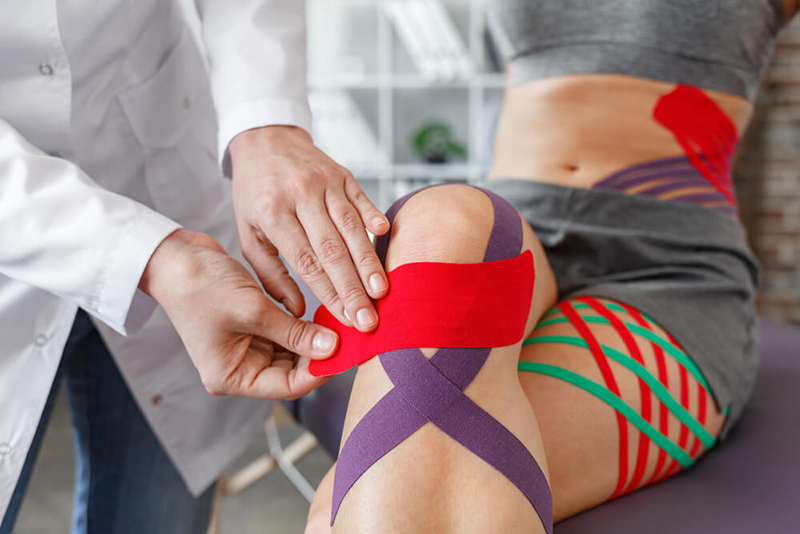
Algunas de las lesiones de rodilla más comunes incluyen:
lesión del ligamento cruzado anterior
Una lesión del ligamento cruzado anterior es un desgarro del ligamento cruzado anterior (LCA), uno de los cuatro ligamentos que conectan la tibia con el fémur. Una lesión del ligamento anterior cruzado es común en personas que juegan baloncesto, fútbol u otros deportes y requiere cambios repentinos de dirección.
Fracturas
Los huesos de la rodilla, incluida la rótula (rótula), pueden romperse durante caídas o accidentes automovilísticos. Además, las personas cuyos huesos han sido debilitados por la osteoporosis a veces pueden sufrir una fractura de rodilla simplemente por dar un paso en falso.
Menisco roto
El menisco es el cartílago duro y gomoso que actúa como amortiguador entre la tibia y el fémur. Puede romperse si gira repentinamente la rodilla mientras soporta peso.
bursitis de rodilla
Algunas lesiones de rodilla pueden hacer que la bolsa se inflame, provocando hinchazón en la parte frontal de la rodilla. La bursitis ocurre cuando la bursa se irrita, daña o infecta con frecuencia y produce demasiado líquido.
tendinitis rotuliana
La tendinitis causa irritación e inflamación de uno o más tendones, los tejidos fibrosos y gruesos que unen los músculos a los huesos. Los corredores, esquiadores, ciclistas y quienes practican deportes y actividades de salto pueden desarrollar tendinitis rotuliana.
Entonces, ¿cómo se previene y alivia el dolor en diversas zonas de la rodilla? La mayoría de la gente opta por utilizar cinta de kinesiología Para la rodilla.
Qué es cinta de kinesiología para la rodilla?
La cinta kinesiológica para la rodilla es una tira para aliviar el dolor muscular hecha de materiales como el algodón y el spandex. Es muy elástica y liviana al tacto. Está cerca de la piel y es cómoda y se usa a menudo en deportes y fisioterapia para brindar soporte a los músculos y las articulaciones y ayudar a la recuperación. En el caso de la rótula, la cinta kinesiológica para la rodilla se puede aplicar de formas específicas para brindar soporte, mejorar la circulación y aliviar el dolor asociado con afecciones como el trastorno del recorrido rotuliano o la tendinitis rotuliana.
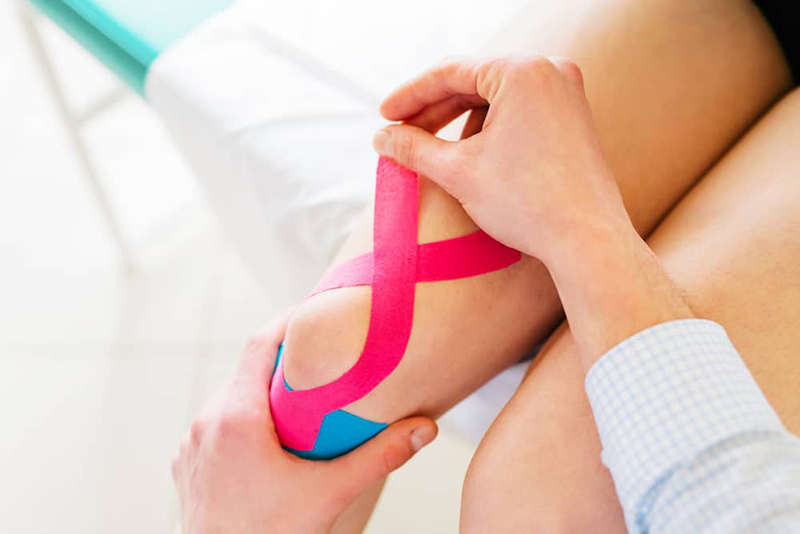
¿Qué efectos produce la cinta kinesiológica en las rodillas?
1. Aliviar el dolor y el malestar
Las rodillas desempeñan un papel importante cuando el cuerpo se mueve. Si se lesionan, otros grupos musculares (como la zona lumbar o los muslos) tendrán que compensar la lesión, lo que puede provocar una reacción en cadena de rigidez y dolor en varias zonas del cuerpo. Por lo tanto, las tiras para el dolor muscular pueden ayudar a aliviar el dolor de rodilla y, al mismo tiempo, aliviar o reducir el dolor en otras zonas.
2. Reducir la posibilidad de sufrir otras lesiones
Dolor de rodilla es solo uno de los muchos problemas que pueden surgir con las rodillas y, dado que las rodillas son una combinación de fuerza y fragilidad, pueden surgir más problemas rápidamente si no se tiene cuidado. La cinta kinesiológica para rodillas sostiene y protege la rodilla mientras se mueve, lo que ayuda a evitar agravar lesiones existentes o causar otras nuevas.
Cómo utilizar la cinta kinesiológica para aliviar el dolor de rodilla?
Asegúrese de que la piel de las rodillas y alrededor de ellas esté limpia y seca.
1. Corte dos trozos de tiras de cinta para lesiones deportivas de unos 25 cm de largo (el largo se determina según la rodilla) y asegúrese de que los bordes estén redondeados.
2. Siéntese usted (o la persona que está tratando) en un taburete y doble las rodillas en ángulo recto (90 grados).
3. Retire la cubierta protectora de los primeros 3 cm de cinta kinesiológica para la rodilla y péguela a la parte superior de la rótula, justo por encima del interior de la articulación de la rodilla.
Una vez asegurada, estire la cinta de kinesiología para la rodilla hasta una elasticidad de 65% y aplíquela en el interior de la articulación de la rodilla.
4. Retire una porción de la segunda tira para el dolor muscular para asegurarla, estírela hasta 65% y envuélvala alrededor de la parte delantera de la rótula.
5. Limpie la superficie de la tira contra el dolor muscular para activar el adhesivo.
Ver video de cinta kinesiológica para rodilla
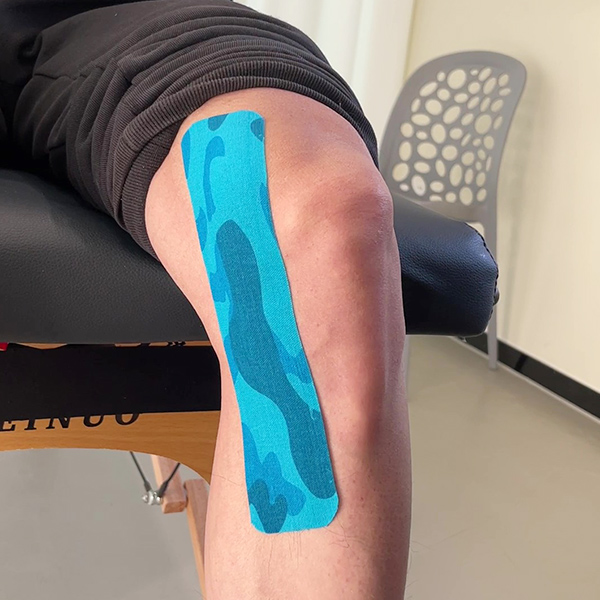
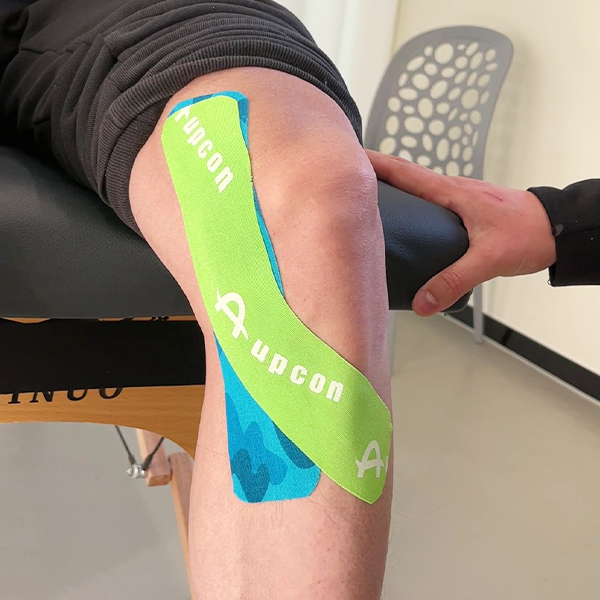
¿Cómo se pega la rodilla con cinta adhesiva para alinear la rótula?
Asegúrese de que la piel de las rodillas y alrededor de ellas esté limpia y seca.
1. Prepare una cinta kinesiológica en forma de Y y dos en forma de L para la rodilla (mida la rodilla para conocer la longitud específica y compárela con la imagen).
2. Siéntese usted (o la persona que está tratando) en un banco y doble las rodillas.
3. Despegue 3 cm de la parte inferior de la cinta en Y y asegúrela a la mitad superior del muslo. Estire los extremos restantes de la cinta terapéutica 30% a lo largo de los extremos izquierdo y derecho de la rótula para que encajen.
4. Corte los extremos delanteros de las dos cintas de kinesiología en forma de L para la rodilla y fíjelas debajo de la rótula. Estire la cinta 50% hacia los lados izquierdo y derecho para fijar la rótula.
5. Limpie la superficie de las tiras de cinta para lesiones deportivas para activar el adhesivo.
Ver video de la cinta de rodilla
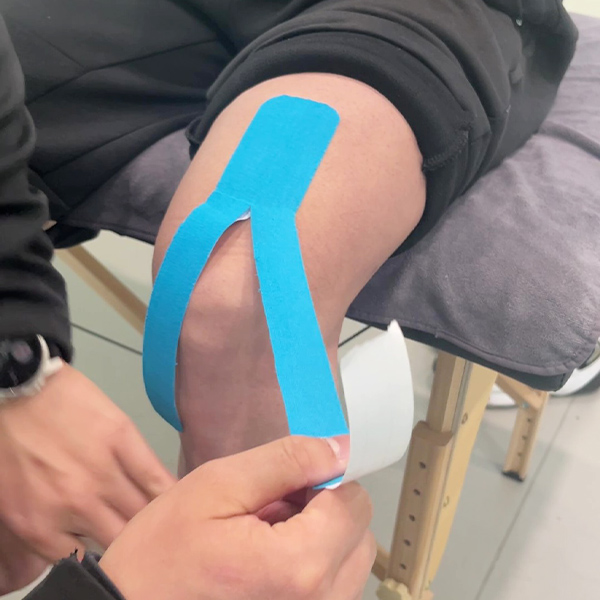

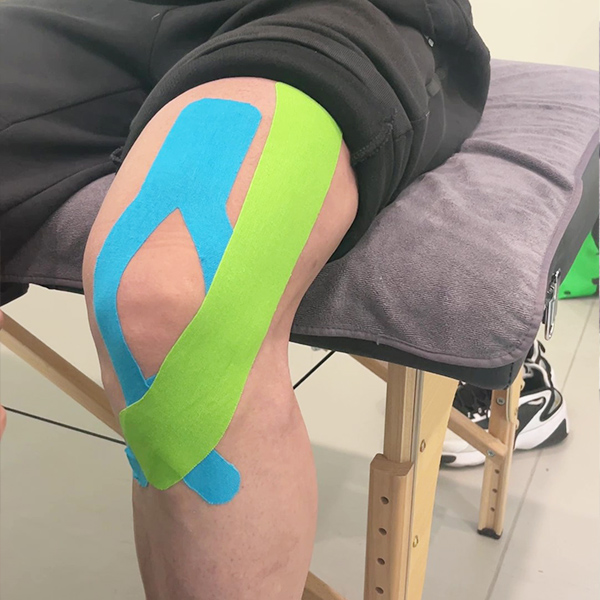

Cómo quitar de forma segura la cinta de kinesiología para el ¿rodilla?
1. La cinta kinesiológica para la rodilla generalmente tiene un adhesivo diferente al cinta atlética rígida, que se activa con el calor. Para retirar la cinta de kinesiología de forma cómoda sin dañar la articulación de la rodilla, se recomienda aplicar aceite (por ejemplo, aceite de oliva o de bebé). Frote el aceite en el adhesivo de la cinta de kinesiología y alrededor de él para reducir la adherencia y déjelo puesto durante al menos 15 minutos. Después de aplicar el aceite, la cinta de kinesiología debería desprenderse rápidamente de la piel en una ducha tibia o con agua tibia y una esponja.
2. Retire la tira para el dolor muscular lenta y cuidadosamente para evitar irritar la piel. El mejor método es enrollar la tira de cinta para lesiones deportivas en su lugar en lugar de separarla de la piel. Para reducir las molestias, presione la piel mientras retira la tira para el dolor muscular en la dirección opuesta.
Continúe leyendo para obtener más información sobre Cómo usar la cinta de kinesiología De rodillas para tratar diversas afecciones.
¿Buscas la cinta de kinesiología más barata?
La cinta kinesiológica más barata es, por supuesto, la que se encuentra en la fábrica. La cinta kinesiológica más barata es la que no tiene intermediarios que marquen la diferencia. Por ejemplo, AUPCON. El líder fabricante de cintas de kinesiología En China. Contáctenos ahora para obtener precios al por mayor.



